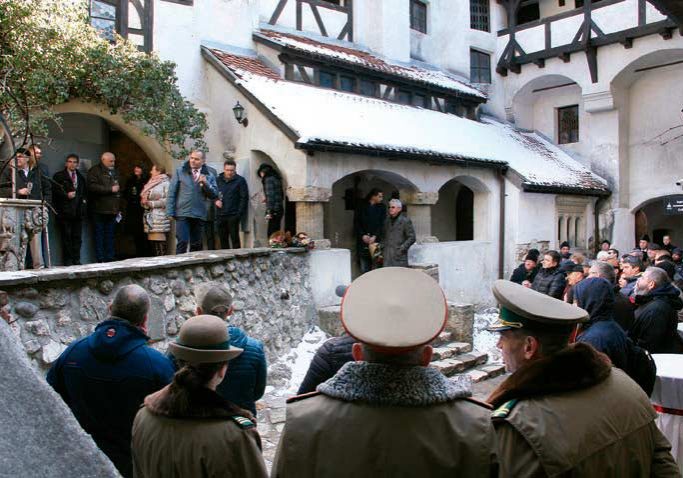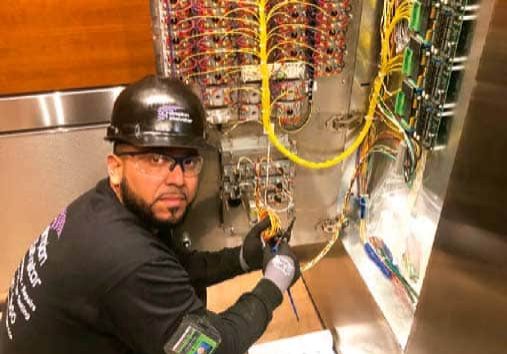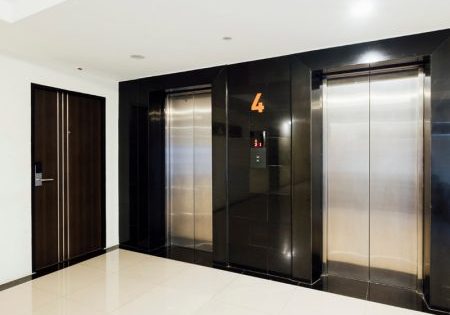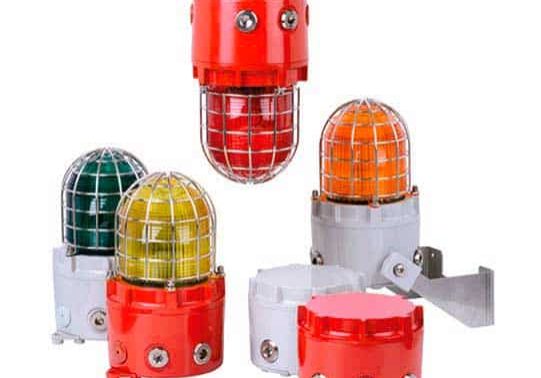Modernization for the Metro
May 1, 2019

In 2017, RATP, the public transport operator and infrastructure manager of the Paris Metro, concluded it was time to modernize the two 100-person-capacity elevators at the historic Lamarck- Caulaincourt station, one of its deepest, but wanted the work to proceed without interrupting service of the Metro line at this station — where these lifts are the only vertical-transportation means. It was also decided to increase the number of cabins in each shaft from two to four to increase the overall availability and service provided to riders.
The elevator shaft at Lamarck- Caulaincourt is 28 m deep and 7 m in diameter. With 126 mT of materials and components involved, the only way to remove the old equipment and bring in the new was the tunnel. Adding to the challenge was a limited, three-hour window to move it, from 1:30 to 4:30 a.m. each night. In addition, all the tasks were carried out manually because of the constrained environment (reduced storage area, proximity of Metro patrons).
Operator of Paris subway renews elevators at one of its deepest stations.
Despite the di–culties, at the end of eight months of work, the transition from two to four lift cabins made it possible to double the capacity, thanks to a duplex system (two cabins for entry and two cabins for exit). The new lifts are adapted to the station’s tra–c to provide improved service. Finally, they reduce energy consumption, are more reliable and more comfortable.
Description
Located on the Metro line 12 of the RATP railway, the Lamarck-Caulaincourt station opened in October 1912 as one of the deepest stations of the Parisian Metro railway. The station has three levels: street, middle and platform. These were served by two automatic lifts. Each had a 100-person capacity with two cabin doors: one for entry and the other for exit, so that the passengers enter on one side of the cabin and exit on the other. One of the cabins was dedicated to upward travel, and the other was for descent.
The lift shaft is circular, 7 m in diameter, which gives the cabins an unusual shape: trapezoidal, rather than rectangular. The cabin’s doors were slanted, and the cabins presented a considerable overhang. The elevators were 18 years old, which would ordinarily indicate a refurbishment, but, because of the elevators’ specific characteristics, it was determined that a complete renewal of the system would be the cost-effective option. The controls and programmable logic controllers were outdated; the system of roping was complex, with nine return pulleys using 1 km of cable, which had to be changed every two years. All of these factors led to the decision to install four new cabins in the shaft where only two had been before.
The job would take 34 weeks, so the main challenge was to replace the lifts without interrupting service. The schedule had to be adhered to, because both lifts had to be put out of service for the duration of the project, meaning the only way to get in or out of the station was to use a spiral staircase with 210 steps.
| Specifications |
| ♦ Lift manufacturer: IMEM ♦ Number of cabins: four, in one shaft ♦ Transport capacity: 30 riders per cabin ♦ Shaft dimensions: 28 m deep and 7 m in diameter ♦ Weight of the structure: 60 mT |
Deep and Narrow
Lamarck-Caulaincourt is not only deep, but also narrow, which meant all handling work had to be done manually, and there was only limited space for the staging of parts. There was only an area next to the lifts and two small areas on the platform that allowed for the movement of Metro passengers. To not disturb the passengers, the old parts were placed on the platform and then loaded manually into the work trains. The dismantling of the old elevators took seven weeks and required 14 work trains. It was di–cult because it had to be done manually and because work trains could be canceled at any time if an urgent tra–c matter on the network arose. Indeed, the trains could be reoriented to another top-priority project or to infrastructure maintenance emergencies.
One of the most di–cult tasks was handling the old motors, each of which weighed 2 mT. In the end, 66 mT of old equipment were removed manually and hauled off on work trains.
After the old lift equipment was removed and the lift shaft was empty, extra work was needed to stop water leaking into the shaft walls. While this work was progressing, parts were being supplied by work trains each night. Once the shaft preparation was complete, a new frame, which separates the four lift cabins, was raised from the bottom to the top through the use of temporary cabins. The frame and floor of the cabin were finished and enabled to reach the top of the shaft.
The four cabins and landing doors were then finalized. The machines were installed, and electrical connections were made. Three weeks were dedicated to making tests and adjusting the settings between the duplex cabins. Overall, 60 mT of material were brought in, thanks to eight work trains over several nights.
During the last weeks of the work, the communication department installed an exhibition in the corridor of the Metro station to show the passengers how the work looked from the inside. For the inauguration of the lifts, film coatings with pictures about the project were installed inside the cabins.
No Interruptions
The work lasted eight months, was conducted within a constrained environment and completed without interrupting service to Metro passengers. Nearly 130 mT of material was manually moved, including old parts going out and new parts coming in.
The new lifts provide a 60% reduction in energy consumption. They are made of lighter but more-standard parts and components and have a simplified roping system, but should provide longer service life with greater reliability. Thanks to the new duplex system, the station’s lifts now double the transport capability for each direction.
Get more of Elevator World. Sign up for our free e-newsletter.








